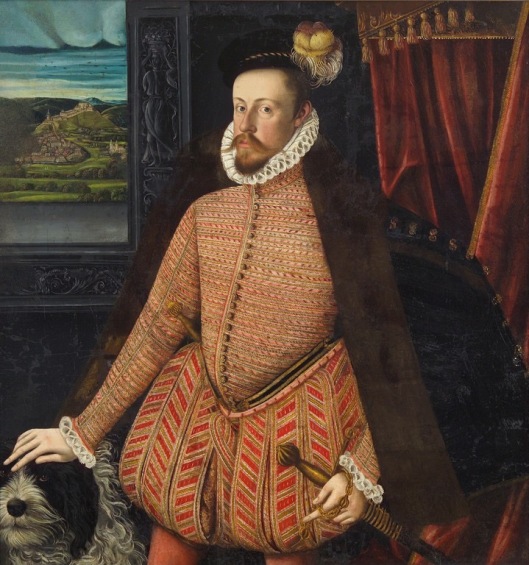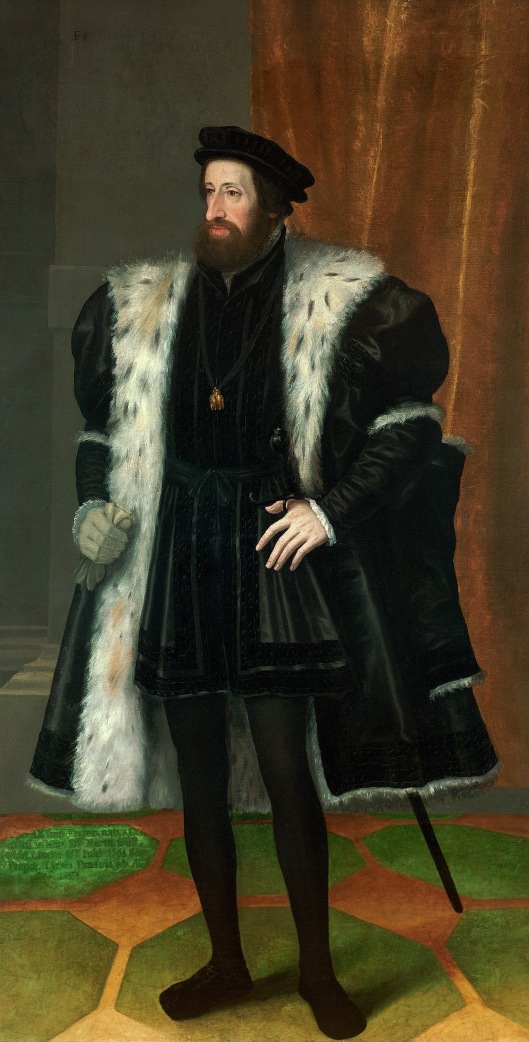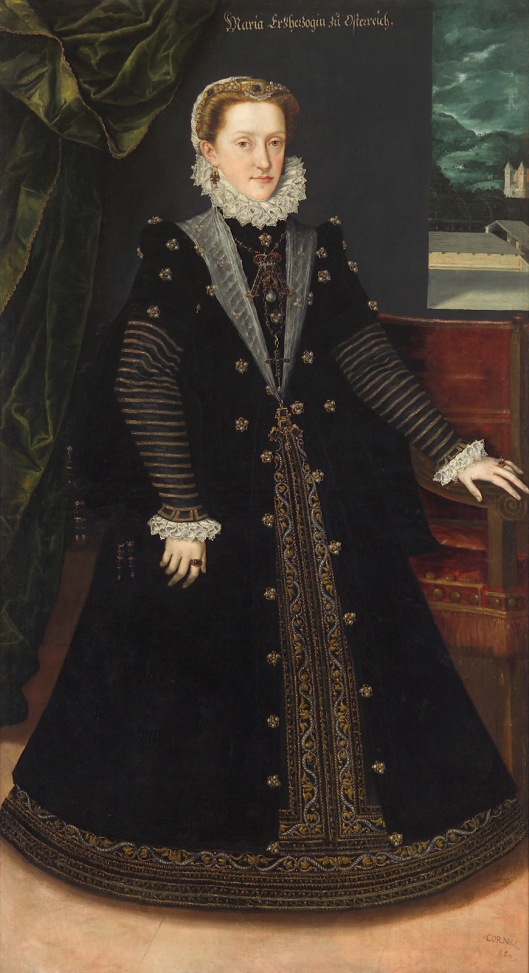Tags
Anne of Bohemia and Hungary, Archduke Charles II of Austria, Archduke of Austria, Charles of Austria, Charls-Franz, Holy Roman Emperor, Holy Roman Emperor Ferdinand I, Holy Roman Emperor Ferdinand II, Holy Roman Empire, Maria-Anna of Bavaria
Charles II Franz of Austria (June 3, 1540 – July 10, 1590) was an Archduke of Austria and ruler of Inner Austria (Styria, Carniola, Carinthia and Gorizia) from 1564. He was a member of the House of Habsburg.

Archduke Charles II Franz of Austria
A native of Vienna, he was the third son of Ferdinand I, Holy Roman Emperor, and Anne of Bohemia and Hungary, daughter of King Vladislaus II of Hungary and his wife Anne of Foix-Candale. In 1559 and again from 1564–1568 there were negotiations for a marriage between Charles-Franz and Queen Elizabeth I of England.
Emperor Ferdinand I expected Queen Elizabeth to promise in the proposed marriage treaty that Charles-Franz as her widower, would succeed her if she died childless. The negotiations dragged on until Queen Elizabeth decided that she would not marry the Archduke; religion was the main obstacle to the match, apart from the Queen’s character. In 1563, Charles-Franz was also a suitor of Mary I, Queen of Scots, with her uncle Charles, Cardinal of Lorraine, advising her to marry Charles-Franz in order to obtain assistance in governing Scotland. Mary, however, disagreed, as did Charles’s older brother Maximilian.

Emperor Ferdinand I (Father)
Unlike his brother, Emperor Maximilian II, Charles-Franz was a religious Catholic and promoted the Counter-Reformation, e.g. by inviting the Jesuits to his territory. However, in 1572, he had to make significant concessions to the Inner Austrian Estates in the Religious Pacifications of Graz, and 1578 and the Libellum of Bruck. In practice, this resulted in tolerance towards Protestantism.
As the Inner Austrian line had to bear the major burden of the wars against the Turks, the fortress of Karlstadt/Karlovac in Croatia was founded in 1579 and named after him. Charles-Franz is also remembered as a benefactor of the arts and sciences. In particular, the composer Orlando di Lasso was one of his protégés, as was the music theorist Lodovico Zacconi.

Anne of Bohemia and Hungary (Mother)
In 1573, Charles-Franz founded the Akademisches Gymnasium in Graz, the oldest secondary school in Styria. In 1580, Charles-Franz founded a stud for horses of Andalusian origin in Lipica, Slovenia, thereby playing a leading role in the creation of the Lipizzan breed. In 1585, Charles-Franz founded the University of Graz, which is named Karl-Franzens-Universität after him.
Charles II Franz died at Graz in 1590.
Charles II Franz’s mausoleum in Seckau Abbey, in which other members of the Habsburg family are also buried, is one of the most important edifices of the early Baroque in the South-Eastern Alps. It was built from 1587 onwards by Alessandro de Verda and completed by Sebastiano Carlone by 1612.
Marriage and children
In Vienna on August 26, 1571 Charles-Franz married his niece Maria-Anna of Bavaria. Maria-Anna was the daughter of Albrecht V, Duke of Bavaria and Archduchess Anna of Austria. She was given an elementary education in Latin and religion, but a high education in music, likely by Orlando di Lasso. The marriage to her uncle was arranged to give Charles II Franz political support from Bavaria, and Bavaria an agent in Vienna.

Princess Maria-Anna of Bavaria
Maria-Anna of Bavaria’s mother, Archduchess Anna was the third of fifteen children of Emperor Ferdinand I (1503–1564) from his marriage with the Jagiellonian Princess, Anna of Bohemia and Hungary (1503–1547). Her siblings included: Elizabeth, Queen of Poland, Maximilian II, Holy Roman Emperor, Ferdinand II, Archduke of Austria, Catherine, Queen of Poland, Eleanor, Duchess of Mantua, Barbara, Duchess of Ferrara, Charles II Franz, Archduke of Austria and Johanna, Duchess of Tuscany.
They had fifteen children:
* Ferdinand (1572-1572).
* Anne (1573-1598), married on May 31, 1592 to Sigismund III Vasa, King of Poland, Grand Duke of Lithuania and King of Sweden.
* Maria Christina (1574-1621), married on August 6, 1595 to Sigismund Bathory, Prince of Transylvania; they divorced in 1599.
* Catherine Renata (1576-1599).
* Elisabeth (1577-1586).
* Ferdinand (1578-1637), Holy Roman Emperor as Ferdinand II in 1619.
* Charles (1579-1580).
* Gregoria Maximiliana (1581-1597).
* Eleanor (1582-1620), a nun.
* Maximilian Ernst (1583-1616), Teutonic Knight.
* Margaret (1584-1611), married on April 18, 1599 to Felipe III, King of Spain.
* Leopold (1586-1632), Archduke of Further Austria and Count of Tirol.
* Constance (1588-1631), married on December 11,1605 to Sigismund III Vasa, King of Poland, Grand Duke of Lithuania and King of Sweden (widower of her older sister).
* Maria Magdalena (1589-1631), married on October 19, 1608 Cosimo II de’ Medici, Grand Duke of Tuscany.
* Charles, the Posthumous (1590-1624), Bishop of Wroclaw and Brixen (1608–24), Grand Master of the Teutonic Order (1618–24).
